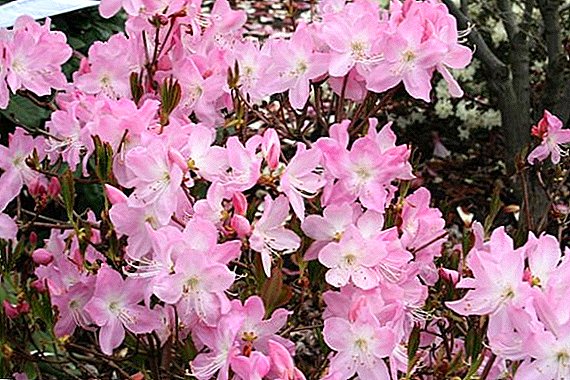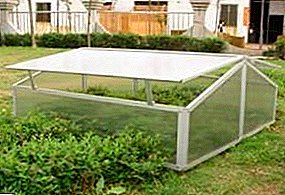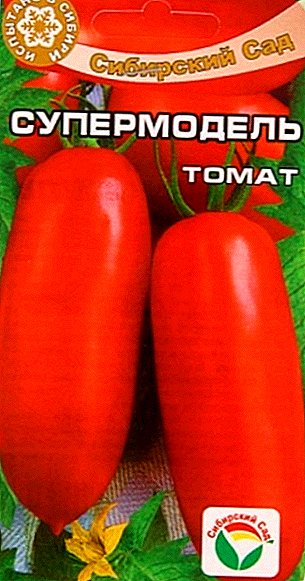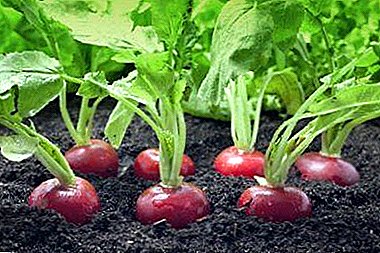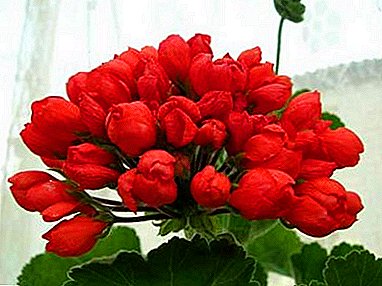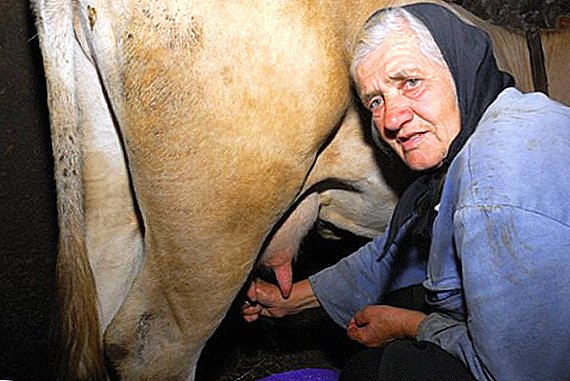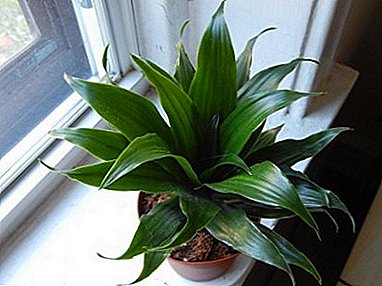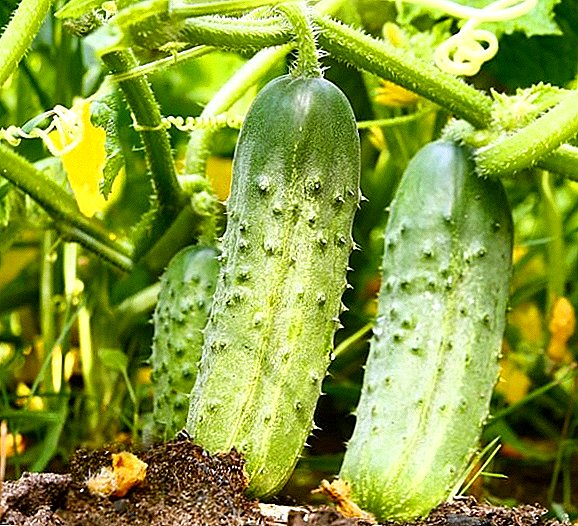 Every vegetable gardener faced diseases and pests of vegetable crops. It's one thing when it happens because of poor care, and quite another when the plant is ill for no apparent reason. This article will discuss how to save cucumbers from diseases and pests.
Every vegetable gardener faced diseases and pests of vegetable crops. It's one thing when it happens because of poor care, and quite another when the plant is ill for no apparent reason. This article will discuss how to save cucumbers from diseases and pests.
Very often, cucumber diseases are caused by improper care. Sometimes the virus is transmitted with tools or through the ground.
Gray rot
 A fungal disease that affects the entire above-ground body of a plant (leaves, stem, flowers and fruits). Infection can be recorded along with soil, plant residues. Also, it is transmitted through the air, and therefore has a wide distribution.
A fungal disease that affects the entire above-ground body of a plant (leaves, stem, flowers and fruits). Infection can be recorded along with soil, plant residues. Also, it is transmitted through the air, and therefore has a wide distribution.
Did you know? One of the strains of the fungus, which causes gray mold, is used in winemaking to obtain raw materials with high sugar content.
Rot on cucumbers most often occurs due to high humidity and low temperature. At such moments, the plant is weakened, and several diseases can simultaneously attack it.
Symptoms of gray mold:
- the appearance of gray spots on the stem, leaves and fruits;
- necrotic spots on the fruit (after that, the cucumbers begin to rot and dry);
- massive wilting of the leaves of the whole plant;
- rotting shoots.
This fungus very often affects parts of the plant that come into contact with the ground. If you planted strawberries at your dacha, then you might notice how the fruits are covered with a grayish bloom, and then rot. The same thing happens with cucumber, so you need to take up treatment in time to save the crop.
 The disease can be cured with the help of fungicides (Fitosporin-M). Before using the drugs you need to cut off all the diseased leaves and shoots. Also worth trying and folk methods: 300 g wood ash, chalk and 1 tsp. copper sulfate on 10 liters of water. This amount is enough for two cucumber bushes.
The disease can be cured with the help of fungicides (Fitosporin-M). Before using the drugs you need to cut off all the diseased leaves and shoots. Also worth trying and folk methods: 300 g wood ash, chalk and 1 tsp. copper sulfate on 10 liters of water. This amount is enough for two cucumber bushes.
Proved and biochemical control agents, which include the drug Trichodermin. The active substance is a fungus that destroys gray rot, while not carrying any threat to the plant and man.
Important! All affected shoots and leaves are utilized off-site to prevent re-infection.
Gray Rot Prevention Measures:
- crop rotation;
- selection of varieties resistant to the disease;
- removal of plant residues from the garden;
- seed dressing.
White rot
 White rot on cucumbers appears quite often, as it lives in the soil and can be transported over distances by wind. The causative agent is a microscopic fungus that parasitizes the plant at an unfavorable time.
White rot on cucumbers appears quite often, as it lives in the soil and can be transported over distances by wind. The causative agent is a microscopic fungus that parasitizes the plant at an unfavorable time.
If the vegetable infects white rot, then cobweb-like growths appear on it. From this disease begins to rot top of the stem, the leaves fade, turn white and become sluggish.
Causes of disease are increased humidity and sudden changes in temperature (the most favorable conditions for the fungus - fog, resulting from a sharp decrease in temperature).
This disease not only stops the growth of cucumbers, but also makes it spend all its strength on the fight against the parasite. There will be no harvest: the fruits will start to dry, and then they will rot.
In order not to let the fungus to your cucumbers, you need carry out preventionwhich is as follows:
- cleaning the soil from rotten plants;
- complex feeding (zinc sulphate, urea, blue vitriol);
- decrease in humidity of air (if landed in the greenhouse).
In the early stages, diseased shoots are cut off, and the place of the cut is sprinkled with pounded activated carbon. Also, slices can be processed with the following mixture: ground chalk and potassium permanganate (with a small amount of water).
 Such methods can be used at the initial stage, or when 2-3 bushes are affected. If many bushes are sick, it is better to use fungicides. The most popular and affordable ones are Oxyhom, Topaz, Rovral SP or copper sulfate-based drugs.
Such methods can be used at the initial stage, or when 2-3 bushes are affected. If many bushes are sick, it is better to use fungicides. The most popular and affordable ones are Oxyhom, Topaz, Rovral SP or copper sulfate-based drugs.
Important! If the fungicides failed, the plant is completely removed and burned off-site.
To protect other crops that you planted next year, you need to pickle the soil with an antiseptic or a strong fungicide.
Root rot
Variety of rot, which affects the underground part of the plant. This disease is so common that it is faced not only by gardeners, but also by many gardeners. Root rot (or black leg) causes a fungus that lives in the soil.
The affected root system turns black, rots and completely dies. Unlike diseased shoots, it is very difficult to notice diseased roots, therefore be guided by external signs of the disease:
- plant sluggish even after watering;
- leaves begin to dry, and constrictions appear on them;
- flowers fall before the ovaries appear;
- the root part of the stem cracks and turns yellow;
- leaves change color and become covered with dark spots;
- growth of a bush is slowed down.

- lack of sevosmena;
- ice water irrigation;
- seed planting too deep;
- infected tools.
Important! Root rot remains in the ground even after removing the diseased plant. Therefore, the soil must be etched, and ideally left for a year under steam.
Many gardeners are interested in what to process cucumbers to get rid of root rot. To overcome root rot, you need to use fungicides.
 In the early stages, you can try folk methods: add 1 tsp to 0.5 l of water. honey, a little wood ash and 3 tbsp. l crushed chalk. With this compound, treat affected areas on the plant.
In the early stages, you can try folk methods: add 1 tsp to 0.5 l of water. honey, a little wood ash and 3 tbsp. l crushed chalk. With this compound, treat affected areas on the plant.
As with the use of folk methods, and fungicides, you need to remove the earth from the affected areas of the roots (unless, of course, this is not a big part of the root system).
It is also worth remembering that root rot causes several types of fungi. In accordance with this need to pick up a fungicide. Find out the exact type of fungus can only be in the laboratory.
If you have tried all the methods, and cucumbers continue to wither, then it remains only to dig up the plant with the root and take it out of the site.
In order to further prevent the return of root rot to garden crops, spend preventive measures:
- water the plant strictly under the root, not falling on the leaves and stem;
- give up weeding in extreme heat;
- water the plant with warm water;
- choose the right predecessors (legumes, potatoes, onions or tomatoes).
Mealy dew
Mealy dew - it is a fungal disease that microscopic ectoparasitic fungi cause. White mycelium can be seen with the naked eye on the leaves of plants: they are painted in whitish color, like hoarfrost.
In addition to the leaves, the fungus infects the stem, young shoots and fruits. When the mycelium matures, small drops of water form on it, which is why this disease got its name. White scurf over time becomes denser and begins to darken.
This disease is dangerous not only because it makes the bushes "gray", it slows growth, interferes with important processes inside the plant. Affected leaves and shoots blacken and die over time.
The same thing happens with fruits that stop growing and wither. If powdery mildew struck cucumbers at the time of flowering, then the ovaries will not, and you will be left without a crop. Powdery mildew on cucumbers can be seen in the picture below.

Like many other diseases, powdery mildew likes high humidity and temperature fluctuations. The defeat of the disease falls on the beginning of summer, when there is a transition between the spring cool and the summer heat.
Also, the fungus may appear due to excessive nitrogen fertilization. If cucumbers are grown in a greenhouse, the causes of the disease are a draft or poor lighting.
Important! The powdery mildew pathogen is transported at a distance by wind or small drops of moisture.
Treat cucumbers for powdery mildew You can use several methods:
- fungicides;
- folk methods;
- biofungicides.
Another method involves the use of sour milk. Separate the serum and dissolve in water 1 to 10. Spray cucumber bushes from the spray gun.
If traditional methods are not suitable, then you can turn to chemistry. Of the fungicides that do an excellent job with powdery mildew, we can distinguish Fundazol, Topaz, Topsin and Bayleton.
Important! Smoothing powdery mildew was observed, which has resistance to some drugs. Therefore, in the absence of changes for the better - try another fungicide.
 There are also more environmentally friendly, but no less effective ways to combat dew. Biofungicides - preparations that contain microorganisms that feed on the powdery mildew agent.
There are also more environmentally friendly, but no less effective ways to combat dew. Biofungicides - preparations that contain microorganisms that feed on the powdery mildew agent.
The most popular biofungicides are Fitosporin-M and Planriz. These drugs are inferior in strength to fungicides, but they do not harm humans and plants. It is necessary to apply them repeatedly.
To prevent disease, need to carry out the following prevention:
- cleaning of all plant residues from the vegetable garden (the fungus hibernates in them);
- introduction of phosphate and potash fertilizers;
- watering cucumbers strictly under the root.
Did you know? The homeland of cucumber is a tropical region of India near the Himalayan mountains. The plant has been used by man for more than 6 thousand years.
Downy mildew
 Downy mildew or perinospora, cucumbers get sick very often. This is a disease that is caused by several lower fungi.
Downy mildew or perinospora, cucumbers get sick very often. This is a disease that is caused by several lower fungi.
Peronosporosis manifests itself in yellowing of leaves, shoots, fruits and their further rotting. A sick plant wraps the leaves, and yellowish spots appear on them. Over time, the spots become brown, and the leaves themselves crumble. Parts of a diseased plant can infect a healthy one, since they contain spores of the fungus.
Perinosporosis is dangerous because, like powdery mildew, at first it slows down the growth of the bush and fruits, and then leads to the general rotting of the whole plant. Therefore, the fight against this disease of cucumbers is obligatory, since there is a risk of infection not only of your entire plot, but also of neighboring gardens.
Important! Peronosporosis affects all groups of cultivated plants, including ornamental shrubs and even flowers. Therefore, it is very important to do treatment in a timely manner.
Downy mildew appears most often at the end of spring, when the weather is very wet and it often rains. It is the increased humidity and lowering of the plant's immunity that leads to infection by a fungus.
Pathogenic microorganisms are transmitted by insect parasites (aphid, whitefly and others), so the area of infection with downy mildew is very large. Also, the disease on the site can be brought along with planting material. Unstained seeds are one of the main sources of infection.
As soon as you find even small symptoms of downy mildew in your cucumbers, you need to immediately examine all the bushes and, if the diagnosis is confirmed, take up treatment. Folk remedies suggest many ways to fight the fungus:
- Mix 10 drops of 5% iodine, 1 liter of skim (or 1%) milk and 9 l of water. The resulting solution is sprayed above-ground body of the plant.
- Brew 2 cups of wood ash with three liters of boiling water. Strain through several layers of gauze. The resulting infusion add to 10 liters of water. Also make the processing of the entire bush, trying to get less on the radical part of the soil.
- In 10 liters of water, dissolve 1.5 g of potassium permanganate and spray the cucumbers.

In order to prevent future diseases of your vegetables and fruits, you need to carry out disease prevention activities.
- Cucumbers 14 days after planting should be treated with a 1% solution of Bordeaux mixture. Processing is carried out regardless of the variety and method of planting.
- Also, the disease prevents the absence of organic residues in the area, plant nutrition and soil mulching.
- If your cucumbers are growing in a greenhouse, then keep the humidity below 80% and the temperature not below 20 ° C to avoid infection by fungus. Do not forget to regularly feed cucumbers, since high immunity is another obstacle to the defeat by downy powdery mildew.
Did you know? Cucumber contains potassium, which improves liver and kidney function. Also, cucumber is rich in fiber. Fiber is not absorbed by the human body, but it regulates the work of the intestines and removes excess cholesterol from the body.
Anthracnose
 Anthracnose - fungal disease of cucumbers, which is caused by deuteromycetes (imperfect fungi). The disease infects many vegetable and fruit crops.
Anthracnose - fungal disease of cucumbers, which is caused by deuteromycetes (imperfect fungi). The disease infects many vegetable and fruit crops.
On the plant, anthracnose appears as brown spots with dark framing on the lower leaves. Over time, the spots merge, and the sheet dies. Depressed spots appear on the stem and shoots, slowing down and inhibiting the movement of nutrients.
Next, the bush begins to dry, breaks. Thus, if time does not take up treatment, then you risk losing all the planted plants.
The disease appears in early May, affecting the wettest areas of the plant - the lower leaves and the lower part of the stem of the cucumber.
Important! Affected fruit should not be eaten!The main causes of anthracnosis include:
- high humidity;
- phosphorus and potassium starvation;
- increased acidity of the soil.

Disease control measures suggest only chemical drugs.
- Treat cucumber bushes with 1% colloidal sulfur suspension.
- According to the instructions, spray the cucumbers with a 1% solution of Bordeaux mixture.
- Spray the affected areas with 0.5% copper sulfate solution.
- Other fungicides that destroy the fungus: Oxy, Acrobat MC, Sandofan M8.
Prevention of the disease.
To begin with, conduct a complex plant nutrition to increase its immunity. Try to control the mode of watering and in time to deal with insect pests that can carry diseases.
Conduct prophylactic treatment with weak fungicides in order to surely protect the plant. If you are afraid that chemicals will fall into the fruit, you can use a lower dose of drugs.
Bacteriosis
 The second name of the disease is angular leaf spot. Most of the previous diseases were caused by microscopic fungi, but the disease is caused by bacteria (Erwinia), which parasitize cucumber.
The second name of the disease is angular leaf spot. Most of the previous diseases were caused by microscopic fungi, but the disease is caused by bacteria (Erwinia), which parasitize cucumber.
Bacteriosis appears in warm weather at high humidity (temperature + 25-27 ˚С and humidity 80-85%). Bacteria can get into the ground with seeds, soil, or plant debris. The infection for considerable distances transports the wind and insects.
Important! The disease affects cucumbers both in the open field and in the greenhouse.
The disease is primarily dangerous because it can hit the plant at any time: from planting seedlings to the period when the fruit ripens.
Bacteriosis affects leaves, shoots, fruits. If the plant is infected during the flowering period, then the ovary will not. The minimum yield loss is 30%. If you do not treat the disease, you can be left without a harvest.
Angular Leaf Spot manifested as follows:
- yellow spots not cotyledon leaves;
- dark brown spots on the outside of the sheet;
- formation of turbid liquid on the back of the sheet;
- watery ulcers on the stem, shoots, fruits;
- deformation of the fruit.

Treat bacterial disease You can several methods.
Agrotechnical option:
- destruction of rotten plant debris;
- plowing with a full turn of the soil layer;
- crop rotation;
- the use of disease-resistant hybrids (Cascade, Graceful, Kustovoy and others).
Disease prevention based on the use of good seeds (etched with a solution of 0.02% zinc sulfate) or cucumber seedlings.
Since very often the infection occurs in the early stages, do not forget to improve the immunity of the plant, feeding it with complex fertilizers. Maintain medium soil moisture and avoid stagnant water in the area.
Rhizoctoniosis
Disease caused by imperfect fungus Rhizoctonia solani Kuhn.It affects not only cucumbers, but also potatoes, carrots, cabbage.
The main causes of mushroom on cucumbers - thickening of landings and excessive watering. In this case, the pathogen feels great at normal humidity and temperature from 3 to 25˚С.
If the sprouting razoktoniozom sick - a large number of plants will die (acts like root rot), which simply breaks in half and dries out.
In an adult plant, all parts of the bush are affected except inflorescences. The leaves dry, the fruits are covered with "sores" and not stored. Adult bushes will not die from this fungus, but there will be large losses in yield.
Defeat of rhizoctoniosis on the seedlings can be recognized on the yellow basal neck and light orange spots on the cotyledon leaves.  An adult plant reacts to the disease differently: leaves are covered with large dark spots of irregular shape, depressed oval spots with dark edging are formed on fruits, petioles are covered with oblong ulcers.
An adult plant reacts to the disease differently: leaves are covered with large dark spots of irregular shape, depressed oval spots with dark edging are formed on fruits, petioles are covered with oblong ulcers.
Expel the fungus from cucumbers can be chemical or biological means. If a large enough area is affected by a fungal disease, then fungicides should be used, namely: Kvadris, Strobe, Metamil MC and Ridomil Gold MC. These are the most common fungicides that are used by farmers and gardeners.
Biological treatment option based on bacteria and ticks that eat the causative agent of rhizoctoniosis: Trichodermin, Planriz and Baktofit. There are drugs in small areas, and re-treatment is required after a while. Such drugs do not harm humans or plants, and therefore are a good alternative.
To prevent the appearance fungal disease, you need to adhere to the following rules:
- observe crop rotation;
- monitor the humidity of the air and soil (especially in greenhouse conditions);
- mulch with film or other materials;
- destroy weeds and clean the area from rotten residues;
- loosen the soil in a timely manner.

Mosaic
The disease is caused by the virus Cucumber mosaic cucumovirus. On the plant viral mosaic is manifested as wrinkled leaves, the appearance of dark green or white spots. The leaves become mosaic-colored, and their edges are wrapped. In addition to the leaves, the fruits of cucumber are affected (covered with white spots) and the stem (cracks and cracks). 
The virus is dangerous in that, until it is detected, huge areas of landings can be affected. A sick plant loses growth, and productivity is halved.
The virus is transported along with the land and the infected or rotten parts of the plant. A cucumber can fall ill both at the time of planting, and throughout the entire growth and fruit ovary.
The chance of infection increases the wound and damage to the above-ground body of cucumber. It is important to understand that the virus can get into the greenhouses through contaminated soil. Also, insect parasites can infect a large number of bushes.
Important! Juice, roots, leaves, fruits and shoots of the affected plant are carriers of the virus, therefore they are burned outside the site, and all tools that have been in contact with the diseased culture are disinfected.
Mosaic affects plants regardless of conditionsHowever, high humidity and air temperature from +25 ˚С and higher create the most favorable conditions for the virus.
Mosaic virus is not treatedtherefore, affected plants must be disposed of immediately. Fortunately, many varieties of cucumbers that are resistant to the virus (Zozulya, Lord, Arina, Verenta) are bred.
Need to carry out protection measures against the mosaic virus, namely:
- cleaning of weeds from a site;
- disinfection of instruments;
- preplant seed treatment with potassium permanganate;
- destruction of potential carriers of the disease.

Olive spotting
Cladosporium cucumerinum Ellis Arthur causes olive cucumber spotting, so the disease is often referred to aspalm sporosis".
The disease on the plant manifests itself in the form of spots of olive color. Very often the spots appear on the fruits. Over time, droplets form on the spots, and then the darkening spots harden. After healing, the spots are covered with a white film.
 The disease is dangerous because it slows the growth of the whole plant, spoils the fruit and inhibits their development. When fully damaged, cucumber bushes can dry out.
The disease is dangerous because it slows the growth of the whole plant, spoils the fruit and inhibits their development. When fully damaged, cucumber bushes can dry out.
The fungus infects cucumbers at high humidity and low temperature. Such conditions can form in the greenhouse with a sharp temperature drop.
Infection of cucumbers occurs through the soil. Most often, the fungus overwinters on the rotten parts of plants and weeds. The pathogen in the garden can be brought along with seeds that have not been disinfected.
Cure plant can both popular methods and fungicides. To popular methods of treatment include spraying the bushes with iodine chloride solution or serum with water (1 to 10).
More effective in combating olive blotch are chemicals.
- Spraying 1% solution of Bordeaux liquid.
- Fumigation with sulfur dioxide for two days. It is used in greenhouses.
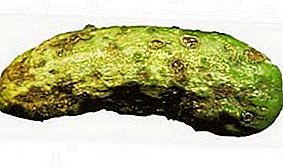 Also the disease can be prevented, if you make fertilizer in a timely manner, clean the soil from plant residues and disinfect greenhouses and greenhouses. It is important to observe crop rotation and monitor the humidity of the air.
Also the disease can be prevented, if you make fertilizer in a timely manner, clean the soil from plant residues and disinfect greenhouses and greenhouses. It is important to observe crop rotation and monitor the humidity of the air.Did you know? From the point of view of botany, the fruit of a cucumber is a pumpkin, that is, it is a fruit, but from the point of view of cooking, a cucumber is a vegetable.Now you can recognize the disease and cure it. Knowing the methods of preventing diseases of cucumbers, you can prevent the defeat of the plant and collect a good harvest.


